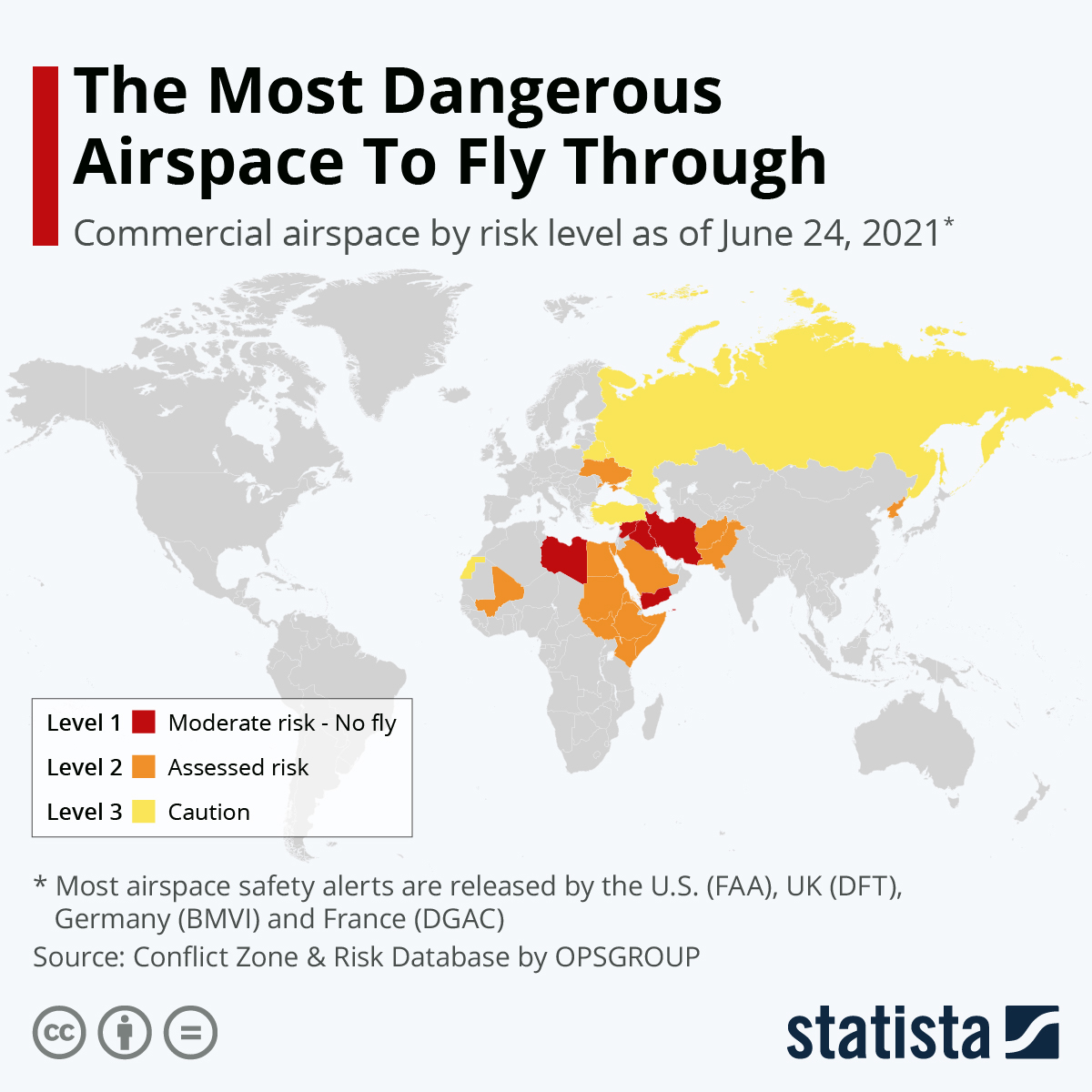'No Fly Zones' - These Are The Most Dangerous Airspaces To Travel Through
Ryanair Flight 4978 was subject to a bomb threat in Belarussian airspace on May 23 and it was escorted to Minsk by a MIG-29 fighter jet where opposition activist Roman Protasevich was detained, along with his girlfriend. Condemnation of the episode was swift with EU Commission President Ursula von der Leyen descrbing "the hijacking of the Ryanair plane by the Belarus regime as an attack on democracy" while U.S. President Joe Biden condemned it "in the strongest possible terms".
As Statista's Niall McCarthy notes, the event served as a reminder that some sections of international airspace carry an inherent level of risk for passenger flights.
Cases of "air piracy" have proven rare down through the years but the Ryanair incident has striking similarities to another forced diversion that occurred in July 1971. That involved a BOAC flight carrying two men associated with an abortive coup d’état attempt in Sudan being forced to land in Benghazi, Libya by the Gaddafi regime. The men in question were handed over to Sudan and immediately executed upon orders from the country's new president. More recently, the shootdown of Ukraine International Flight 752 over Tehran in 2020 and the destruction of Malaysia Airlines Flight 17 over Eastern Ukraine in 2014 have shown that conflict and geopolitical tensions also pose a risk to commercial airliners.
Other notable cases down through the years include USS Vincennes shooting down Iran Air Flight 655 in 1988 with the loss of all 290 people on board as well as Korean Air Lines Flight 007 which was shot down by a Soviet SU-15 fighter jet in 1983 with all 269 crew and passengers onboard perishing. Give those incidents and the recent shock emanating from Belarus, which parts of the world pose the greatest risk to civilian air traffic in 2021? The bulk of airspace safety alerts are released by the U.S. (FAA), UK (DFT), Germany (BMVI) and France (DGAC) and they have been brought together by the Conflict Zone and Risk Database across three levels of risk classification.
You will find more infographics at Statista
The first and most severe classification is Level 1 which involves a moderate risk level where airlines are strongly urged to avoid the airspace entirely. The classification is due to highly unstable events on the ground and the possibility that factions possess MANPADS (man-portable air-defense systems) or other surface-to-air missiles. Libya, Iran, Syria and Yemen are currently classified as being a Level 1 risk.
Level 2 involves assessed warnings for certain airspace sections or altitudes with Afghanistan, Belarus, North Korea and Ukraine among the countries classified as such.
Level 3 is the least severe classification which involves a state of caution where a security review should be conducted before flights operate within a country's airspace.
https://ift.tt/35YRKJ7
from ZeroHedge News https://ift.tt/35YRKJ7
via IFTTT


0 comments
Post a Comment